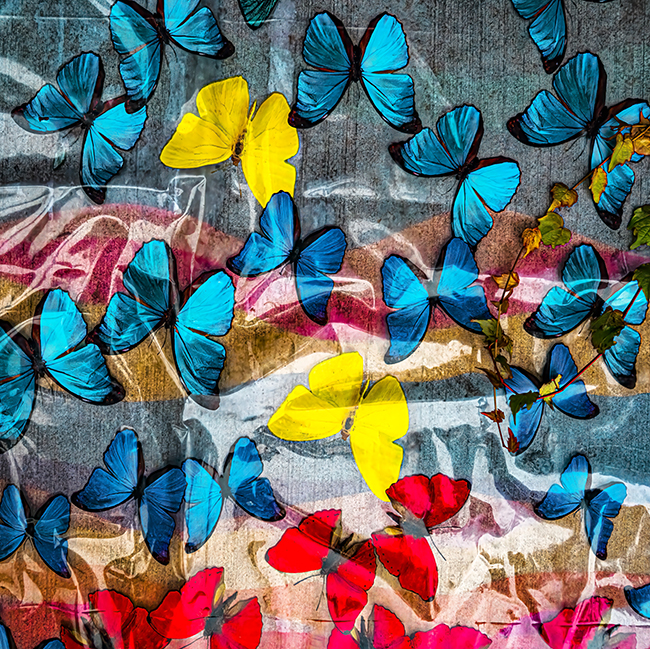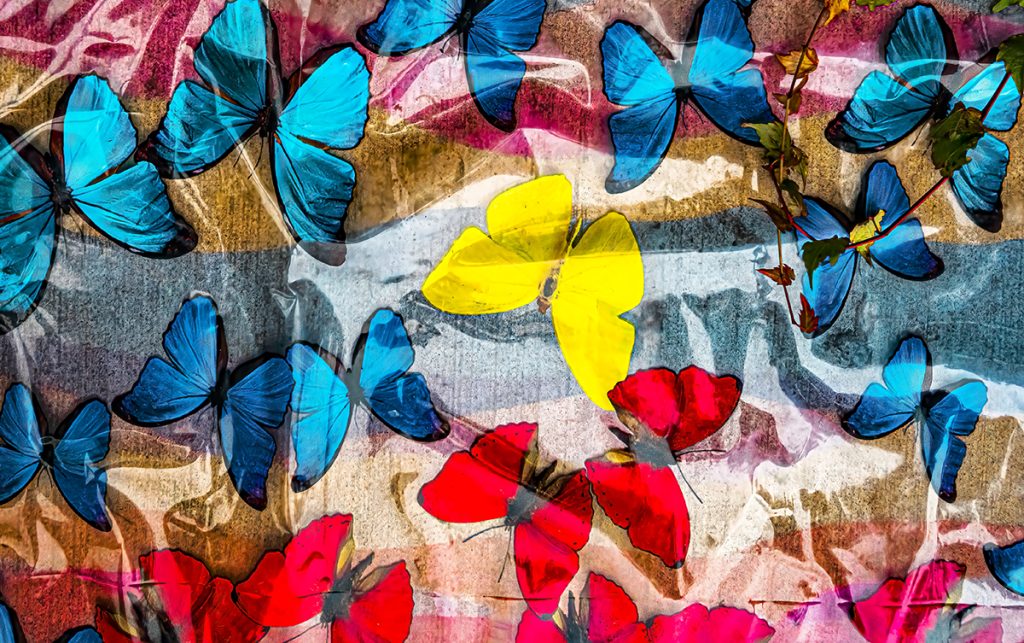Julian Jollon, an American artist, stands as one of those rare creators whose life story is inseparable from the work he produces. His art is a reflection of both survival and transcendence, tied closely to themes of mythology, spirituality, and the fragile resilience of the human spirit.
Formally trained in Fine Arts, Photography, and Painting, Jollon’s career took a sharp detour for fifteen years. Personal trials, including a liver transplant and a long stretch working in Hospital Epidemiology, forced him into a different rhythm of life. Yet these challenges became a crucible, reshaping his view of existence. When he returned to art, it was with the perspective of someone who had looked mortality in the eye and lived to tell its story. Like the phoenix he often invokes in metaphor, Jollon’s rebirth was not only creative but deeply spiritual—a return armed with clarity about impermanence and endurance.

Butterfly Memories
Among Jollon’s recent works, Butterfly Memories stands out as a photographic meditation on fragility and transformation. At first glance, it appears simple—a plastic curtain patterned with butterflies. But the object carries a weight far beyond its surface. It had been used as a blanket by a homeless Indigenous man in Seattle, a man navigating the tangled struggles of addiction and survival.
Jollon recounts that this man, despite his circumstances, turned his blanket into something more than protection from the cold. He transformed it into an altar, a memorial dedicated in real time to the Seattle Black Lives Matter events. This act of transformation, born from almost nothing, struck Jollon as both heartbreaking and profound. The object—plastic and temporary—became sacred through intent.
The photograph captures this tension. Butterflies, symbols of metamorphosis and rebirth, float across the surface of the curtain. Yet their beauty is held against the stark reality of the curtain’s origin: a thin piece of plastic shielding someone without a home. The juxtaposition is deliberate. Jollon does not romanticize the hardship. Instead, he allows the viewer to sit in that uneasy space where beauty and suffering overlap.
The Power of Duality
At the heart of Butterfly Memories lies duality—the tension between fragility and strength, despair and hope, object and altar. Jollon is less interested in the surface-level image than in the transformation that gave it meaning. The curtain was both a shield against cold nights and a sacred canvas. The butterflies are both printed decorations and symbols of transcendence.
This is where Jollon’s voice as an artist comes through: in recognizing that art can be found in the most unlikely places, even in the discarded or the desperate. His camera becomes less a tool of documentation and more a way of bearing witness to resilience.
Context and Meaning
The choice to tie the altar to the BLM events adds yet another layer. The man who created it was making a statement, however small, about visibility, memory, and solidarity. His altar was not built in a gallery or a church, but on the street. It spoke to injustice, but also to the human need to honor and to remember.
Jollon, with his lens, preserved that act. He did not invent the meaning but amplified it, ensuring it would not disappear when the plastic curtain was eventually discarded. In this way, Butterfly Memories becomes both a record and a meditation.
Fragility and Transformation
It is no accident that Jollon, having survived his own near encounters with mortality, would gravitate to a work like Butterfly Memories. His life and the life of the man behind the altar share common threads of fragility, endurance, and transformation.
The butterflies themselves become almost autobiographical. They remind us that change is both inevitable and often painful. They remind us that beauty can emerge even in the most unlikely settings—a hospital bed, a city street, a sheet of thin plastic.
Conclusion
Julian Jollon’s Butterfly Memories is not just a photograph; it is a dialogue between object and meaning, between suffering and transcendence. It asks viewers to reconsider where art lives and what makes something sacred.
In Jollon’s hands, the curtain is no longer just plastic, and the butterflies are no longer just decoration. They are witnesses to transformation, survival, and the human capacity to reimagine the world—even from the harshest of margins.
Through this work, Jollon continues his own story of return: to life, to art, and to the delicate act of finding light within fragility.

